Relics of zero-Covid dot China as life moves on
- Published

China built hundreds of makeshift hospitals to accommodate Covid patients
China has ditched zero-Covid but remnants of the policy are still everywhere - from sprawling temporary hospitals and empty testing booths, to posters of QR codes that ask for your travel history.
Streets and malls are busy again after officials announced the end of the current wave, sparked by the sudden reversal of three-year-long restrictions.
There is no public record of how much China invested in what became a signature policy of leader Xi Jinping. But according to a Reuters estimate, external last year, Beijing was on track to spend more than 350 billion yuan ($52bn; £43bn) on Covid testing, new medical facilities, monitoring equipment and other anti-Covid measures in 2022.
And now much of that infrastructure is being dismantled or repurposed - or at least that's what officials are trying to do.
In Shandong province, they recently turned a makeshift hospital - which appears to be built from metal containers - into a rental space. It offers discounted apartments to "skilled talents", although it's unclear who qualifies for this.
This is despite local media reporting in only December - just before zero-Covid was dropped - that Shandong's local government was planning to spend 23bn yuan on building makeshift hospitals.
This particular 605-room facility, located in the provincial capital Jinan, was being used as a quarantine centre. One tenant, who works at a carmaker nearby, told Jinan Daily that he "literally moved in with his suitcase", adding it was "very convenient" as his workplace was just across the street.
The government has portrayed this as a cost-saving win. Many people commenting online support it too, suggesting it as a housing option for migrant workers.
Others, however, question how comfortable this "square cabin" would be in winter, especially as it was built within a month last year.
"I suggest the person who came up with the idea go and live in the square cabin," one user on Weibo mocked. On Douyin - the Chinese version of TikTok - a top-liked comment read: "This will surely scare the talents away."
But that's not all that remains as an inescapable reminder of life under zero-Covid.
Testing booths, both mobile and stationary, had been a common sight across the country. Located in every neighbourhood, they played an essential role in implementing zero-Covid.
Now some of these booths are up for sale - from 500-8,000 yuan - on second-hand trading platforms. Many more are still on the streets, sitting empty and no longer in use.
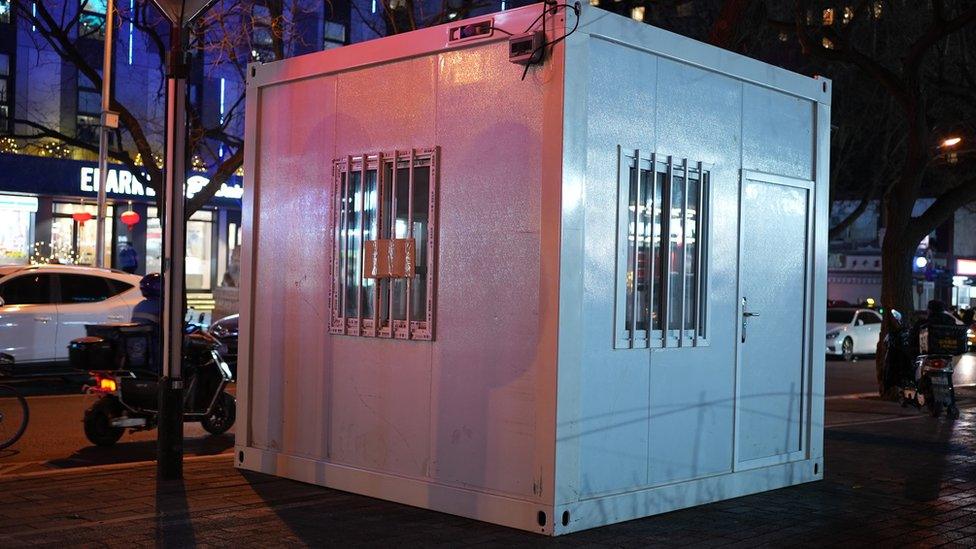
An abandoned testing booth in Beijing
Queues at these sites were common at the peak of restrictions as some places required people to test every day. Often people had to have a negative result for permission to use the bus or buy groceries.
Tape and barricades also frequently seen - to section off parts of streets for testing booths, queues or other Covid-related measures. Many of these remain visible too.
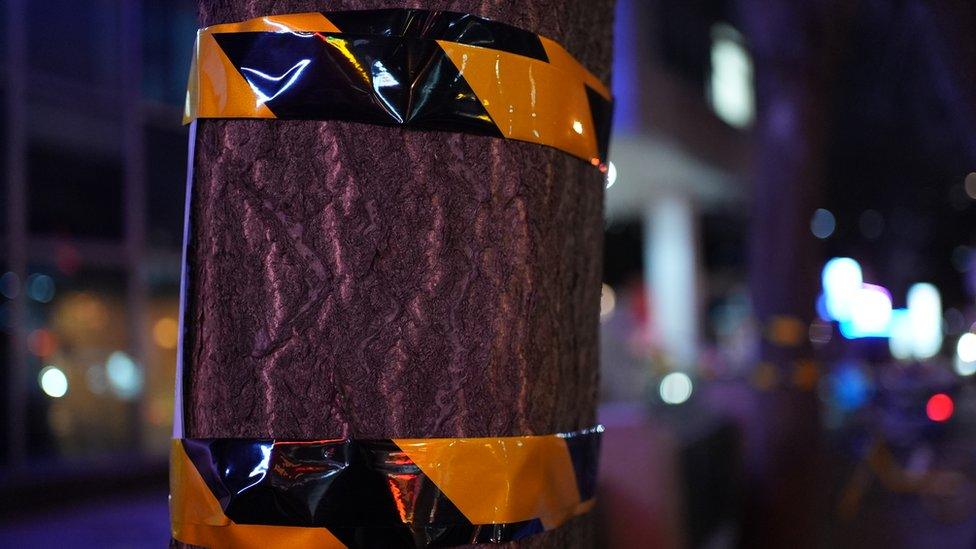
Tape like this was used to cordon off areas
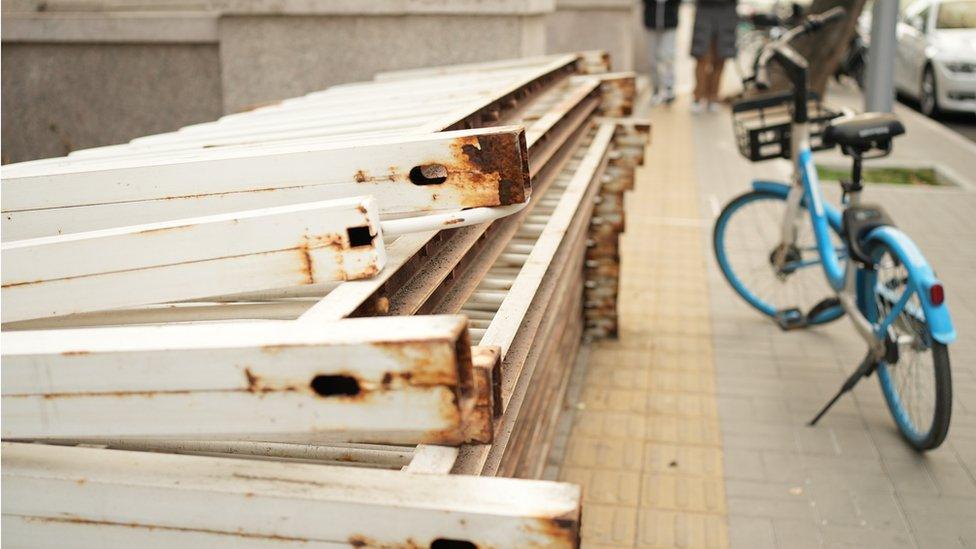
Temporary barricades lie on the side of the road
While most testing requirements are gone, bright red posters asking people to scan QR codes can still be spotted everywhere.
Under zero-Covid, anyone entering shops or restaurants was required to scan these codes, which revealed their travel history, whether or not they had Covid, or whether they had been in contact with someone who had tested positive.
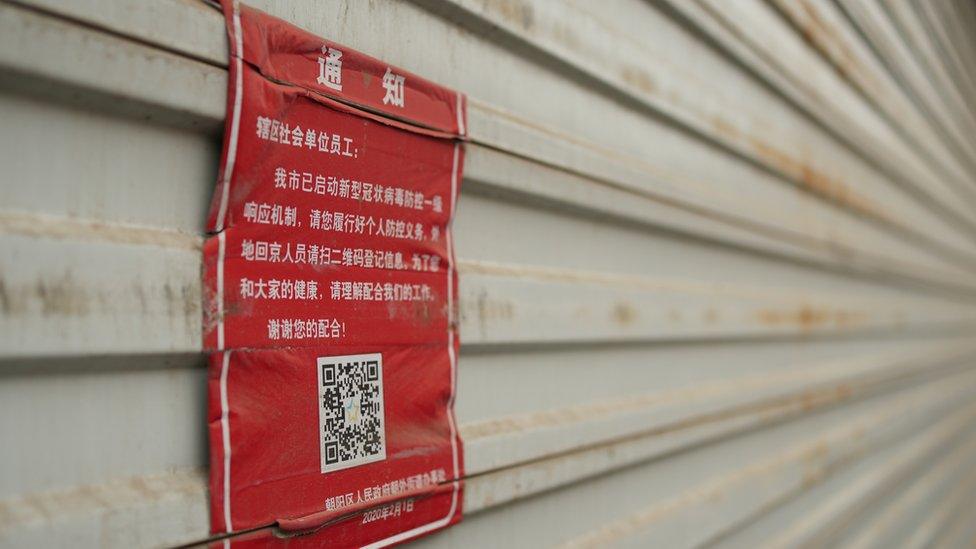
A notice from February 2020 asking people to register travel information via a QR code
In some cases the signs are stuck on to restaurants and shopfronts that have long shut.
Zero-Covid hit China's economy hard, strangling supply chains and shuttering businesses, from economic hub Shanghai to rural towns.

A duck restaurant appears to be out of business on a Beijing street
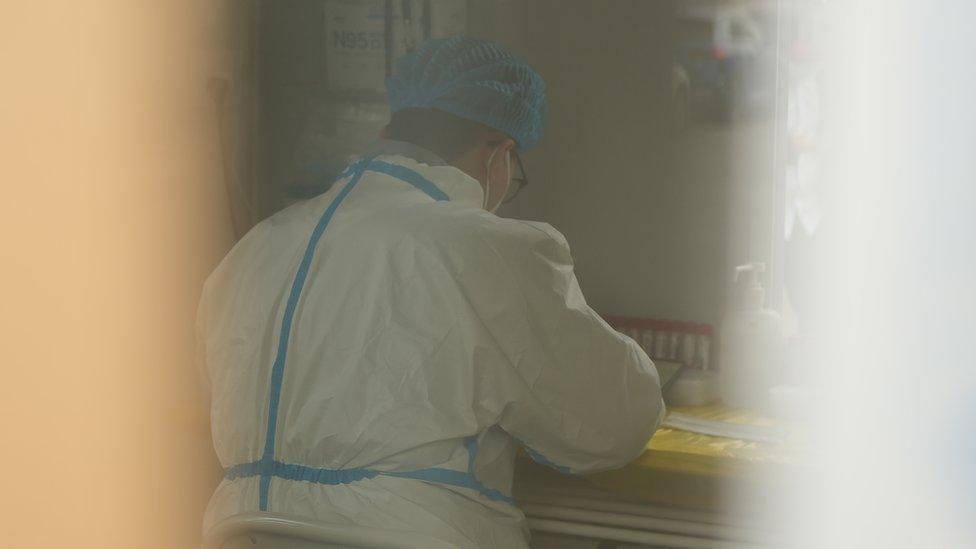
A health worker dressed in white hazmat suit working at a booth in Beijing
But the one thing that is no longer visible is the hundreds of thousands of workers in white hazmat suits who carried out Beijing's zero-Covid edicts.
There has never been an official tally of their number, and it seems like authorities have given little guidance on where they could work next.